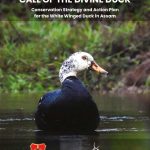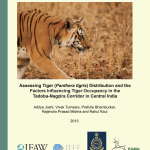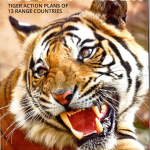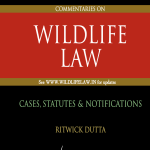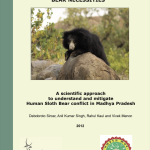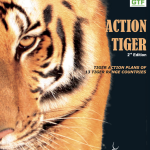My first experience in the field as a wildlife veterinarian with Wildlife Trust of India
Keonjhar, Odisha, 22 October , 2020:
It was a bright Saturday morning in the Mobile Veterinary Service (MVS) field station at Keonjhar, Odisha. I was getting ready for my 3-hour online orientation on wildlife rescue and rehabilitation. The session had just begun when we received a phone call about the death of an elephant at Tangrbahali reserve forest, near Barabanka village under Sadar range of Keonjhar division.
This was going to be my first case as an official wildlife veterinarian, and I was excited beyond words. I attended the orientation on my phone while traveling to the site and was able to participate till the network allowed. I was accompanied by my project head Mr. Rudra Prasanna Mahapatra, MVS Veterinarian Dr. Bandeeta and the ACF Mr. Ghanshyam Mohanta. When we reached the location, I saw biscuits and water bottles being stocked and I realized that this was going to be a long day!
We started our trek up to the mountain at noon, where the elephant had reportedly succumbed. The path was steep and slippery and I was instantly reminded of my days in the Ugandan rainforest where I had to do similar treks every day in search of mountain gorillas for sample collection as part of my master’s research. The only difference between then and now is probably a few kilos of lockdown weight that I have put on!

It took a good 1.5 hours to reach the spot. Just the thought of being able to cut into an elephant made all my fatigue of the climb go away!
The elephant was apparently found dead two days ago. After an initial examination, two external injuries were found on the body. I was itching to cut open the body and explore the viscera, but we had to wait for the local government veterinarian to arrive as well. Since, it is a schedule 1 species of the Wildlife Protection Act, statutory requirements had to be maintained.
After we were given the green signal, I finally made the first incision and was thrilled to do my first postmortem of an elephant. The carcass was quite old and most of the organs had undergone putrefaction. Nonetheless, it was very interesting to get to know the anatomy of the animal, hands on. Eviscerating the organs was no easy task and took almost an hour to get them out and have a closer look. The elephant seemed to have died due to septicemia and shock. After the three of us (veterinarians) were satisfied with the results, we took off our gloves and sat down. Afterall, we had been on the move constantly for the last 5-6 hours. We had not even had time for breakfast and somehow survived on just two apples which we had eaten before we started the climb.

It was almost 7 pm when we began our journey down the hill. It was a dense Sal forest without any markings of the path we followed on our way up. We were on our way back (or so we thought) until we suddenly realized that we had lost our way. We had taken one wrong turn and it had made all the difference!
It was 8 pm now and was pitch dark. I could hear the crickets and cicadas singing in the background. Fortunately, we had our flashlights and head lamps, which was a huge relief. We were out of network coverage area and quite unfortunately there was also no google maps to get us out! I was dreaming of spending the night in the forest and the thought of getting mauled by a bear brought me back to reality! I tried gauging the direction by trying to locate the pole star but was not really successful. Guess they should start teaching these survival skills better in school!
We then came across a stream and decided to follow it. I vaguely remember having read this as an essential survival skill to follow when lost in a jungle. Also reminded me of a scene right from a horror movie!
We crossed some deep gorges, went through some impenetrable patches of forest and could finally see some light from a nearby village. It was not long before we were finally out of the forest into the lush green paddy fields. It was around 9:30 pm and we were completely exhausted. We literally crashed in the middle of a mud road, not caring one bit on how dirty our clothes might get.

It was a perfect star-studded sky with fireflies glowing all around and the eerie silence blanketing us. It was such a refreshing change from the usual urban milieu. We had to wait till the carcass was disposed and all the forest staff had returned safely.
Lying on the grass under the sky gave me some time for contemplating a lot of things in life. From taking the decision to become a wildlife veterinarian to actually living the dream, I realized I’ve come a long way and joining WTI was one of the best decisions of my life. Experiences like this in the field push you to become the best version of yourself and fall in love with your job all over again.
- Dr Vishakha Vasuki, author of the article, is a wildlife veterinarian with Wildlife Trust of India. Dr Vasuki can be reached at vet.similipal@wti.org.in


